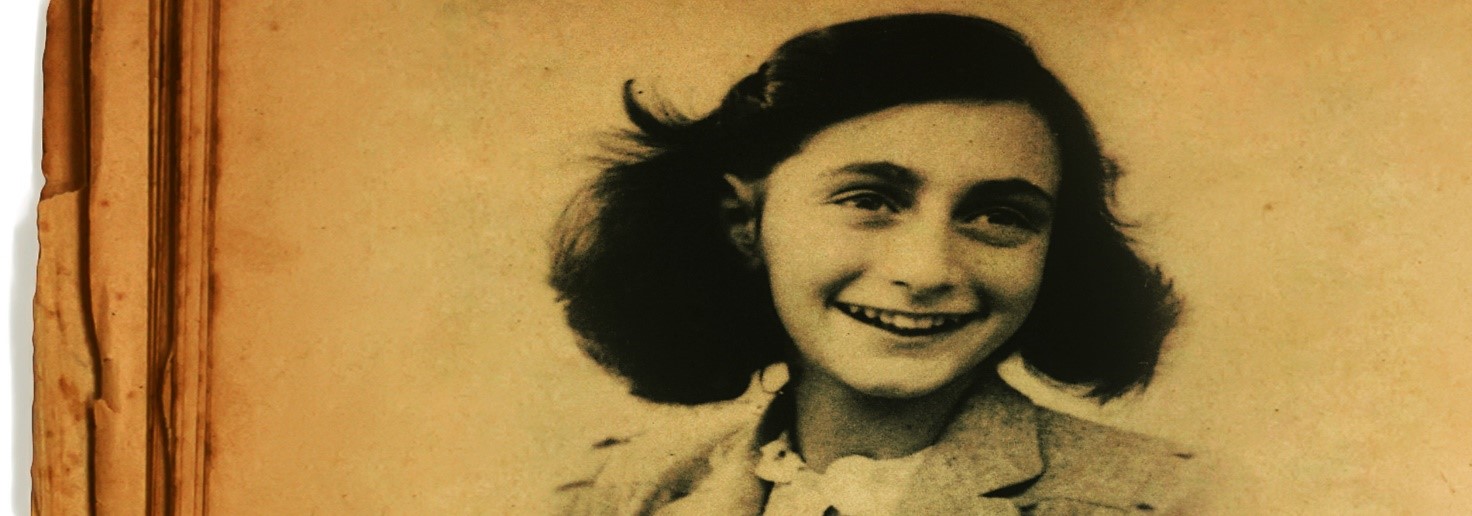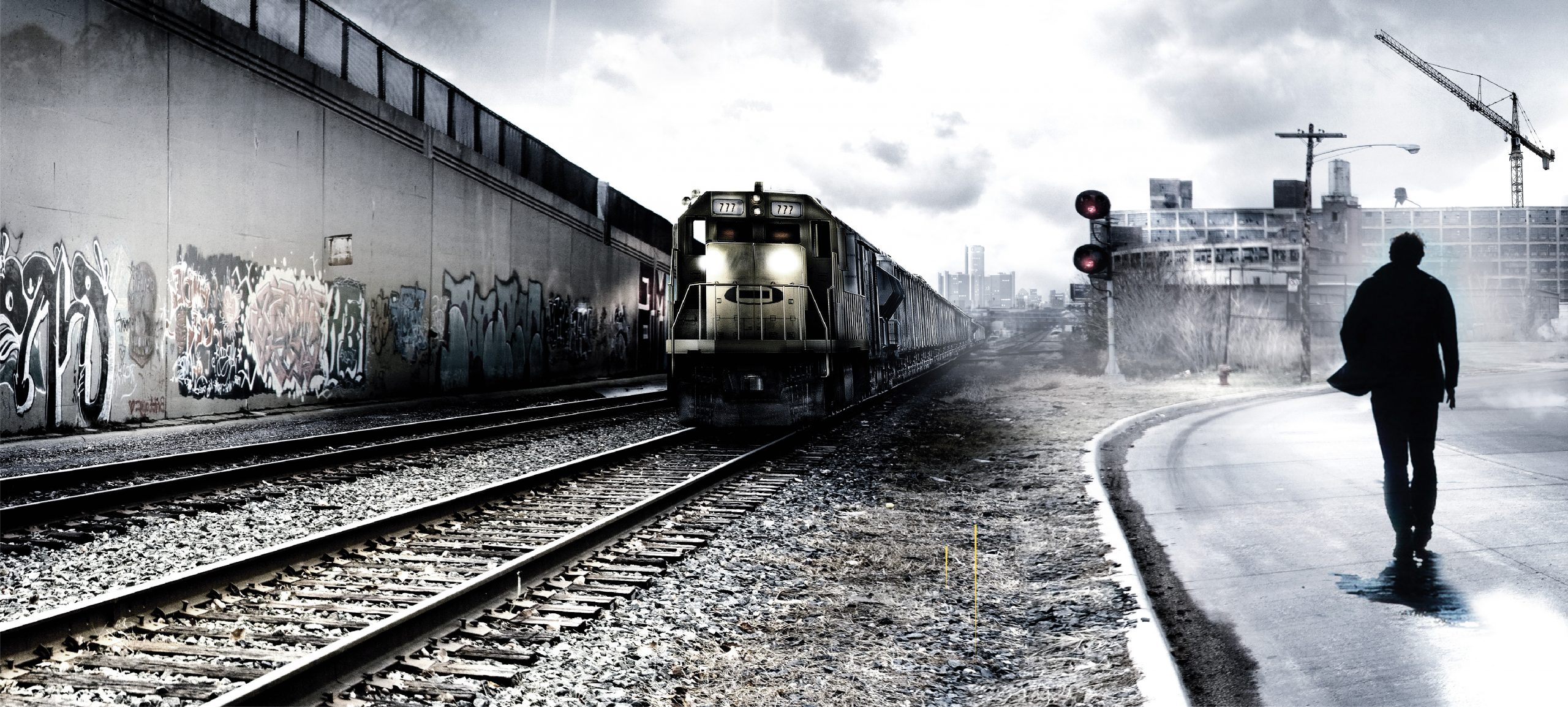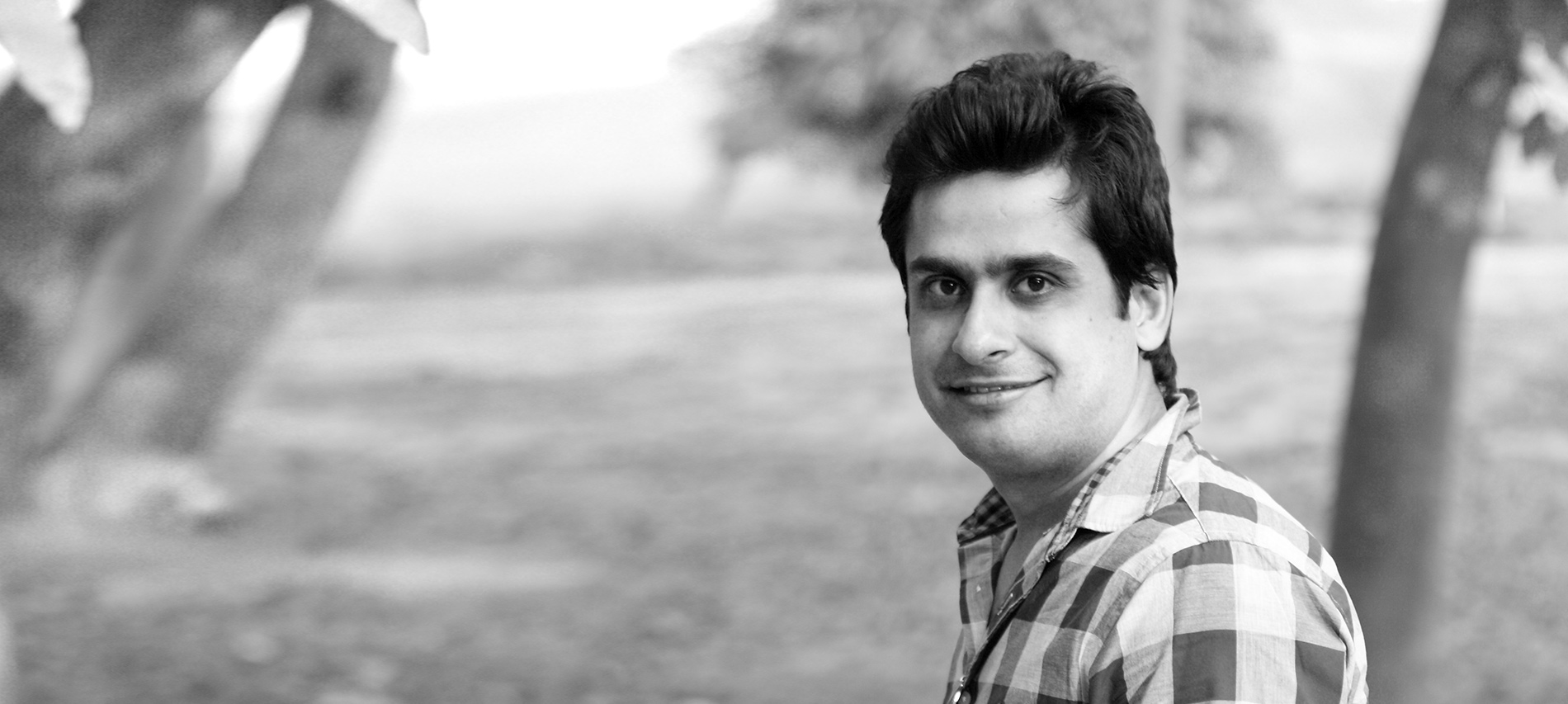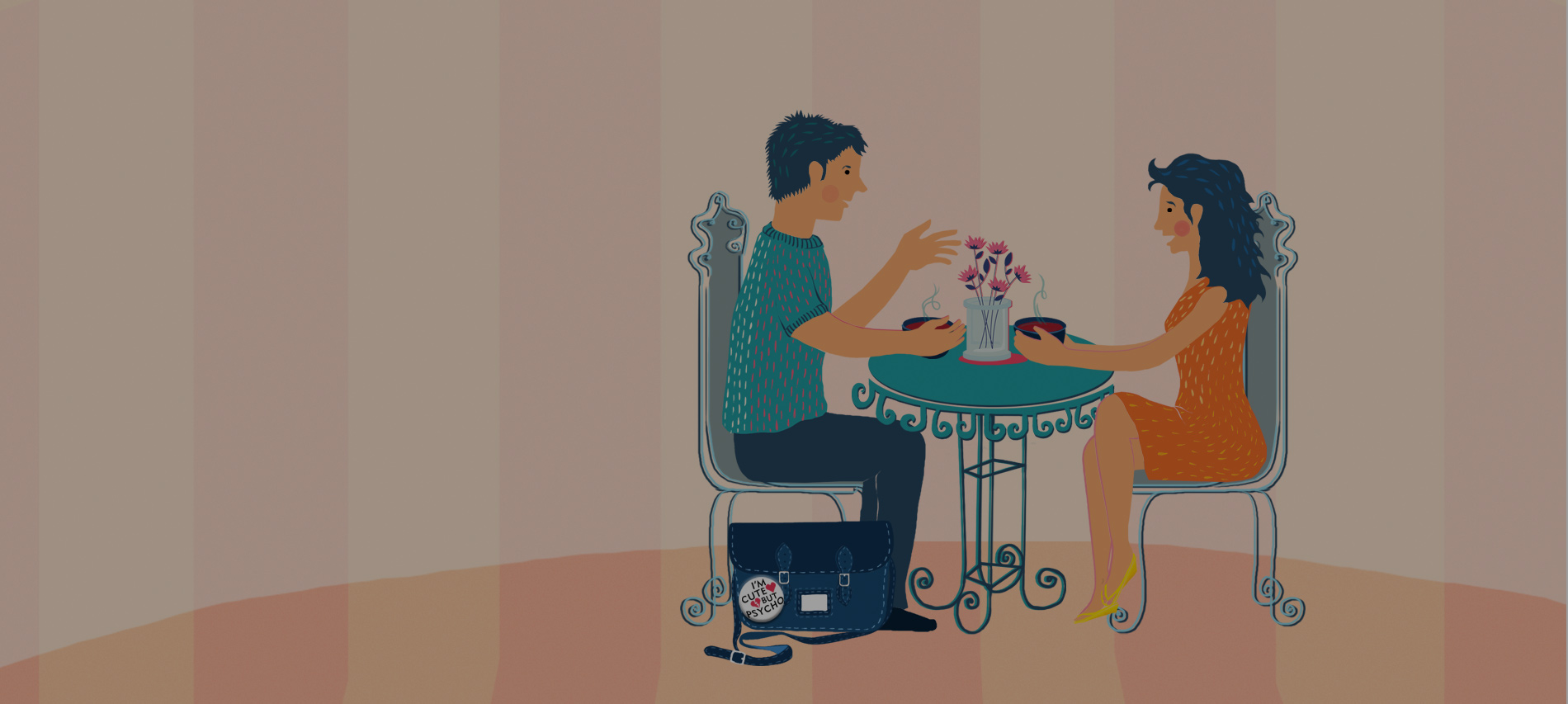Jeff Bezos, the owner of mighty Amazon constantly features in one of the most successful entrepreneurs of modern time. The way he has steered Amazon through all these years, shows his dedication and skill to make things work against all odds. However, even he failed. A lot of articles have come up post this and many different perspectives have tried to solve this problem from a different angle. Jeff Gothelf and Josh Seiden’s book, Sense and Respond tries to look at such cases from a newer perspective:
‘Amazon’s 2014 Fire Phone disaster is a classic example and, oddly, one that comes from the very same company that developed and frequently uses many of the sense and respond techniques we’re discussing—a company we laud in chapter 1 for that reason.
Motivated by consumers’ increasing use of mobile devices, Amazon began the Fire Phone effort in 2010, just as the iPhone 4 was hitting the market. Mobile users were becoming a more important source of traffic to Amazon, and the company wanted more control of the mobile store than Apple would allow. Apple’s rules about what companies can and can’t do in iOS apps include strict rules about commerce, including one that stipulates that Apple gets a 30 percent share of each in- app sale. 2 (The reason you can’t buy a book on the iOS Kindle app is that Amazon doesn’t want to pay Apple 30 percent of each sale.) So Amazon created the Fire Phone initiative to solve a business problem: it wanted complete control over the store that its customers visited on their mobile devices.
But what would be the value to customers? They struggled to find it, in part because of a strict culture of secrecy around this product. Jeff Bezos, CEO of Amazon, had lots of ideas for cool features. But cool and valuable are not the same thing. Over time, Bezos exerted an increasingly heavier hand in the design and development of the Fire Phone and, according to published reports, ignored feedback from his team that questioned his approach. 3 There was no conversation with the market here, only Bezos talking. He insisted that the phone have a series of fl ashy features like Dynamic Perspective, a 3-D display that didn’t require special glasses and could be seen from all angles; but it delivered little consumer value. Bezos assumed that fl ashy hardware features would make the phone more desirable to consumers than an iPhone. Without a continuous two way conversation with his target audience to guide the development of these features, though, Bezos was making a huge guess.
He guessed wrong. Four years later, in July 2014, the Fire Phone went on sale in the United States. Within days it was clear that consumers were unimpressed— with the design, with the ecosystem, and with the gimmicky features Bezos had pushed for so hard. Priced at $199, the Fire Phone was intended to compete directly with Apple’s iPhone, but consumers didn’t see the value. Instead, they saw it for what it was—a way to easily get to Amazon’s store in a way that was better for Amazon but not significantly better for customers.
After a $170 million write- down of unsold inventory, the Fire Phone was available for 99 cents before finally being sunset in late 2015. The behind- the- scenes stories reveal the arrogance in the top down decision- making process that Bezos led. Although people on the team pushed back, they ended up deferring to the boss. After all, he’d been right many times before. Why wouldn’t he be right again this time?
It might have helped if Bezos had listened to the market. Had he approached some of these decisions as assumptions to be tested and questions to be answered, rather than hunches to be followed blindly, things might have been different.’
You can get your hands at the book here.
This is an excerpt from Jeff Gothelf and Josh Seiden’s Sense and Respond.
Credit: Abhishek Singh
Tag: Penguin India
5 Times Anne Frank Showed Us How to Not Take Life for Granted
The Diary of a Young Girl by Anne Frank is one of the most translated and read books across the world, and with good reason. 13-year-old Anne Frank witnessed holocaust first hand cooped up behind a book-shelf hiding a bunker, and still found hopeful words and the spirit to tell the tale.
Here are five times Anne Frank exemplified why we should strive to see the silver lining in the dark clouds.
“I’ve come to the shocking conclusion that I have only one long-sleeved dress and three cardigans to wear in the winter. Father’s given me permission to knit a white wool sweater; the yarn isn’t very pretty, but it’ll be warm, and that’s what counts. Some of our clothing was left with friends, but unfortunately we won’t be able to get to it until after the war. Provided it’s still there, of course.”

“I long to ride a bike, dance, whistle, look at the world, feel young and know that I’m free, and yet I can’t let it show. Just imagine what would happen if all eight of us were to feel sorry for ourselves or walk around with the discontent clearly visible on our faces. Where would that get us?”

“Have you ever heard the term “hostages”? That’s the latest punishment for saboteurs. It’s the most horrible thing you can imagine. Leading citizens—innocent people—are taken prisoner to await their execution. If the Gestapo can’t find the saboteur, they simply grab five hostages and line them up against the wall. You read the announcements of their death in the paper, where they’re referred to as “fatal accidents.””

“Father, Mother and Margot still can’t get used to the chiming of the Westertoren clock, which tells us the time every quarter of an hour. Not me, I liked it from the start; it sounds so reassuring, especially at night. You no doubt want to hear what I think of being in hiding. Well, all I can say is that I don’t really know yet. I don’t think I’ll ever feel at home in this house, but that doesn’t mean I hate it. It’s more like being on vacation in some strange pension. Kind of an odd way to look at life in hiding, but that’s how things are.”

“After May 1940 the good times were few and far between: first there was the war, then the capitulation and then the arrival of the Germans, which is when the trouble started for the Jews. Our freedom was severely restricted by a series of anti-Jewish decrees: Jews were required to wear a yellow star; Jews were required to turn in their bicycles; Jews were forbidden to use street-cars; Jews were forbidden to ride in cars, even their own; Jews were required to do their shopping between 3 and 5 P.M.; Jews were required to frequent only Jewish-owned barbershops and beauty parlors; Jews were forbidden to be out on the streets between 8 P.M. and 6 A.M.; Jews were forbidden to attend theaters, movies or any other forms of entertainment; Jews were forbidden to use swimming pools, tennis courts, hockey fields or any other athletic fields; Jews were forbidden to go rowing; Jews were forbidden to take part in any athletic activity in public; Jews were forbidden to sit in their gardens or those of their friends after 8 P.M.; Jews were forbidden to visit Christians in their homes; Jews were required to attend Jewish schools, etc. “You couldn’t do this and you couldn’t do that, but life went on. Jacque always said to me, “I don’t dare do anything anymore, ‘cause I’m afraid it’s not allowed.””

These heartrending words taken from the diary of 13-year-old Anne Frank was first published in the year 1947 as The Diary of a Young Girl. The first entry made by Anne Frank was on 12 June 1942 and the last words were written on 1 August 1944, a period of two-years when the Franks were in hiding in Amsterdam.
Anne was determined to tell her story after a member of the Dutch government in exile announced in a radio broadcast from London that once the war ended, he would look for eye-witness accounts of the Dutch people’s horrifying plight in the Nazi regime. He specifically mentioned diary entries and letters as examples. Anne not only wrote her diary but also edited it simultaneously, tuning it to perfection for her readers.
So, here’s wishing the world’s most fearless 13-year-old a very happy birthday. May your words never rest in peace, Anne.

5 Reasons You Should Be Reading Jo Nesbo
Reading crime novels comes with the suspense of not knowing what comes next. If you’re one of those who love the feeling of suspense and still haven’t got your hands on the books by Jo Nesbo, you are missing out big time. Jo Nesbo, a Norwegian crime novelist with more than 15 thriller novels to his name is a must read for every book lover.
So here are five reasons on why should you be reading Jo Nesbo:
His Harry Hole Series

The series revolves around Detective Harry Hole, a classic anti-hero who has alcoholic tendencies and opposes any kind of authority. The novels in this series, like all Nesbo novels, are complex and ambitious constructions combined with high-voltage suspense.. With twelve books in the series, Harry Hole has risen to become a cult figure among the lovers of the thriller genre.
His Novels have been Adapted to films

His stand-alone novel Headhunters was adapted into a film in 2011. The film stars Nikolaj Coster-Waldau and was nominated for many awards, including the BAFTA Award for Best Foreign Language Film category. His other novels, The Son and The Snowman are also slated to be adapted into motion pictures.
He is an Award-Winning Author

Nesbo has many accolades to his name. His debut novel The Bat won the Riverton Prize for Best Norwegian Crime Novel of the Year and the Glass Key Award for Best Nordic Crime Novel of the Year. His other works such as The Redbreast, Nemesis, The Snowman and The Devil’s Star have also been awarded by many prestigious platforms.
He is Multi-talented

Nesbo is not just a crime novelist but also writes books for children. His Doctor Proctor series revolves around a eccentric professor who is waiting for the opportunity to make it big in the world. The series evokes the legacy of Roald Dahl’s books as it encourages the readers to believe in themselves. He also conceptualized the Norwegian political thriller TV series, Occupied.
His Latest Novel, Knife

In his new book , Knife, Harry Hole is about to face his darkest case yet. The first killer he put behind bars is out to get him. Harry is responsible for the many years Finne spent in prison but now he’s free and ready to pick up where he left off.
When Harry wakes up with blood on his hands, and no memory of what he did the night before, he knows everything is only going to get worse . . .
Ready to get your hands on Nesbo novels? Tell us which one you liked the most.
The Missed Opportunities in India’s Development
Anirudh Krishna in ‘The Broken Ladder’ presents a ground-up view of India’s development strategies by delving into common people’s lives. He also ponders on questions like despite being an economic force why are so many Indians living under the poverty line. Through stories of individuals, Krishna reveals the heartbreaking and eye-opening details of missed opportunities and untapped talent that India houses.
Here are a few stories that show the inequality of opportunities in the country:
Children who grow up in poor neighbourhoods suffer from an acute lack of knowledge about the range of career pathways.

With a rare few exceptions, people growing up in villages have not made it big in terms of professional achievements.

In India, for many people like Keshu, the ladders leading upward are broken.

Jaitram and Gopal lead a harsher lifestyle in comparison to their family members who live in the city.

Due to lack of good institutions many students feel that their aim in unassailable.

Growth in the country has not been directly and proportionately experienced by every individual. Tell us how can India better improve the prospects for people like Keshu while simultaneously growing its globally-influential economy?
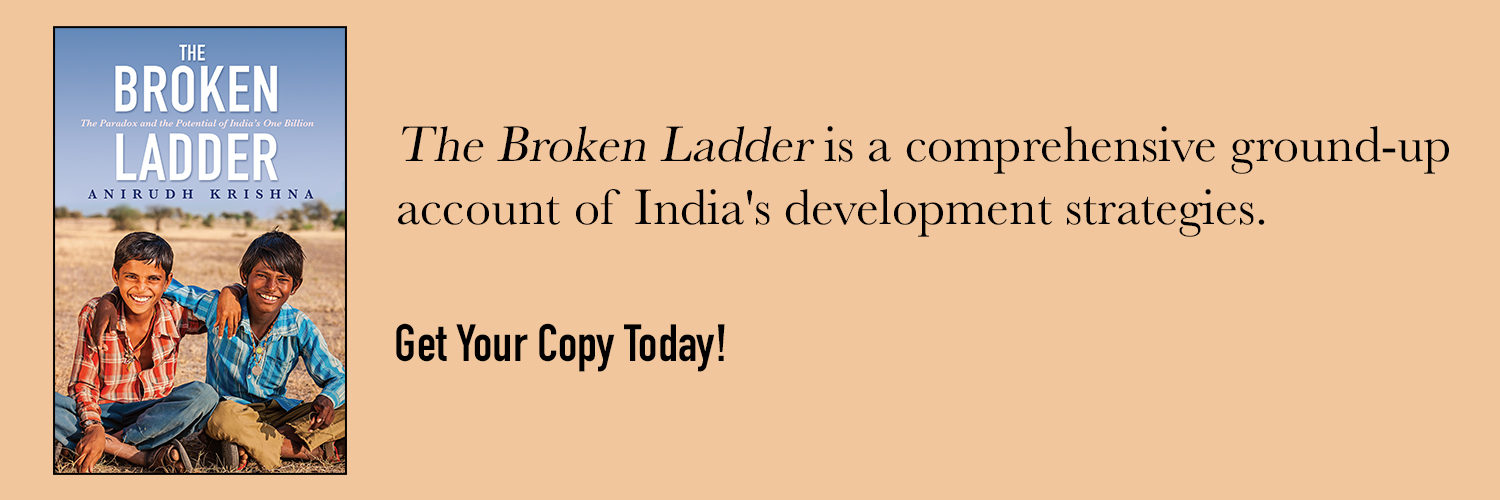
5 Things You Didn’t Know About Vikrant Khanna
Vikrant Khanna is the best-selling author of When Life Tricked Me, Love Lasts Forever, Secretly Yours, and The Girl Who Knew Too Much.
His latest novel, The Girl Who Knew Too Much is an edge-of-the-seat paranormal romance. It tells the story of a 14-year-old girl Akshara who hears about the miraculous reunion of a young woman and her dead boyfriend, and believes she will see her dead mother again.
Here are the 5 little known things about the best-selling author:





How many of these facts did you know about Vikrant Khanna?

Taking the Hating Out of Dating
Some take to fishing. Some don’t. It’s as simple as that.
Likewise, with arranged-dating (modern dating expressly for the purpose of finding a spouse). Some thrive on the anticipation of a good catch, while for some (my personal guess is for many) the uncertainty, the awkwardness of a ‘catch and release’ and of course returning empty-handed (again), can be nothing short of a mild coronary.
While my friends and acquaintances invariably fell in the latter anxiety-stricken category they often spoke with wistful resentment of a creature I dubbed as the Overly Enthusiastic Dater [OED].
An effervescent giant ball of sunshine and an energy drink, OEDs apparently don’t exhibit the slightest tremor. In fact they are enthused at the prospect of sharing their hobbies, family composition, occupation, job history and of course the much contentious dietary habits (Veg? Non-veg? Egg? Fish? Wine? Whisky? Smoke?!?) with strangers… again and again and again.
Nerves of steel? Adrenalin junkies? Extreme Extroverts? How do OEDs survive this minefield, not only unscathed but also brimming with enthusiasm?
A few leisurely cuppas and they were spilling the beans. I’m not sure if these ‘skills’ were innate or evolved to protect their tickers, but they do explain the OED’s joie de vivre.
- Date Martyr
Competition is fierce when it comes to far-out dating stories and every girl wants her slice of sympathy as she narrates the cuckoo-capades to a bunch of wide-eyed happily-married couples. Which is why this OED no longer cringes and prays for Potter’s invisibility cloak but rubs her hands in glee (mentally of course) when she encounters a delusional dude.
Delusional Dude 1: “Hi there, Prepare to be amazed and astounded by me”
OED: Beams like a cat that got the cream
Delusional Dude 2: “I’m into crystal gazing which is why I know there are limited fate portals in the next few years. Yes, yes, we just met but we must marry before the portal shuts”
OED: Beams like a cat that got more cream
- Truffle Hunter
This OED won’t waste time researching her date. Instead she scours through a dozen food guides and reviews before she selects the date venue. Tried the Burmese café last time, what next? Isn’t there a new Caramelised Melon Cappuccino in town? How about an experiment in non-judgement at the new ‘dine-in–the-dark’ cafe? Don’t see chappie, don’t judge chappie. He’s not roasted and her taste buds are singing. It’s a win-win.
Dating in the dark doesn’t scare this OED, running out of new eateries does.
- Errand-dater
This OED is an efficiency machine. She lives by the phrase ‘Location, location, location’. She first browses through her pantry, then through her closet, then her medicine cabinet and finally through the now yellowed piece of paper that was once her to-do list. Flour will run out by Monday? Lycra tops have inexplicably shrunk? Great. Now she plans a weekend date at a café in the mall where she can shop for these.
Some say bumping into your date in the hosiery check-out line right before the date is embarrassing, but she says it’s a chance to practise your poker face and strengthen your peripheral vision (as you surreptitiously glance into his shopping basket).
- Date Mate:
The last and final OED (that I know of) is nothing but a social butterfly and a chatterbox at heart. Despite the obvious incompatibility she can’t resist buddying up with her fellow date.
“Maybe the problem is you are address women as ‘yo! hot mamma’. If you don’t mind my asking what’s your relationship with your mum like?”
“I must fix you up with Vina. She too adoooores Justin Bieber.”
“….and that’s why I decided to walk away. What’s your perspective as a guy?”
“Where did you buy this black lace shirt? Stitched? Really? What was the cost per metre?”
Having met OEDs in person was quite revealing. They weren’t super women or the other extreme – oddballs. They were simply women who saw beyond ‘Mission Groom’.
Every coffee date wasn’t a do or die situation, a sword hanging over their heads; in fact there was always an upside – be it a good meal, scratching errands off a list or finding a new buddy.


Winning with Superconsumers
Daniel Zein (disguised), the CFO of Great Snacks, thought that Nacho Cheese could be one of the company’s most valuable brands, so he encouraged the team to dig further into the product. The team did some robust analysis, and to their surprise, they discovered that Nacho Cheese’s consumers spanned the entire income spectrum.
From the data, it was obvious that Nacho Cheese could be a much bigger brand. Of all the full meals that consumers eat at home, about 37 percent are consumed hot and include cheese. But Nacho Cheese was used in only a fraction of those meals. To grow its product, the Great Snacks team decided to focus on the twenty-four million or so other consumers who share the same three loves that Laura had—people, cooking, and cheese—but who may not understand the magic of Nacho Cheese and the dozens of life solutions that it could deliver.
Simply put, the team gathered data from their superconsumers, ensured that the resultant insights and inspiration also appealed to the other twenty-four million consumers, and then geared its marketing, innovation, and retail execution to their tastes and behaviors. The immediate challenge was to convince the company leadership that Nacho Cheese could grow through better marketing and innovation—from packaging to product.
Line extensions into other forms of cheese were also a logical action step. Great Snacks drove growth by megabranding Nacho Cheese into other categories. The core business grew steadily faster than inflation, but the extensions in cheese (e.g., slices, shredded cheese) grew by double digits. All told, the brand extensions drove more than $50 million in growth, and the megabrand grew $100 million in three years.
For years, innovation for Nacho Cheese was a challenge. Since the brand was not well understood, innovation concepts yielded mixed results, which made the team hesitant to pursue breakthrough innovation. But with new data, the team revamped its innovation testing process to include both superconsumers (like Laura) and potential superconsumers (folks who could become like Laura).
The group was pleasantly surprised to find that among all the new product concepts it tested, some were off-the-charts positive for superconsumers. The team made a few tweaks, the new concepts tested positive for potential superconsumers as well, and the team finally had the results it needed to proceed.
The team saw that retail activation was inconsistent across retailers. In some stores, Nacho Cheese was placed in the center of the store. In others, it was refrigerated in the cheese and dairy section. So the team did some analysis and found that Nacho Cheese sold faster in the refrigerated section, which consequently produced better results for Great Snacks and the retailer. The team learned that superconsumers strongly preferred the product when it was sold in the refrigerated section. What’s more, potential superconsumers had a much easier time finding it in the refrigerated section.
Finally, the Great Snacks team used big data to uncover meaningful ways of improving marketing ROI. It used big data from Nielsen Catalina Solutions—a joint venture that creates a single-source panel of consumers from the sixty million loyalty-card holders from grocery stores and the Nielsen TV panel of two to three million households. The single-source data gave the team interesting insights on the actual TV shows that Nacho Cheese aficionados were watching. In one test using this data, the team found that superconsumers were fifteen times more responsive to Nacho Cheese advertising than other consumers! The vice president of marketing noted that the brand’s marketing objective was to have a conversation with superconsumers about their love for Nacho Cheese, but to do so in a way that potential superconsumers could listen in.
The beauty of all this was that the data the team used to improve innovation, retail activation, and marketing was already there. Superconsumers gave the marketers a way to synthesize the data into a coherent and coordinated set of actions and metrics. Looking at superconsumers like Laura, the team gained confidence that the strategy had even more upside. And the team saw the potential and ran with it.
Want to know a simple, speedy, and sustainable path to superior growth? Order Eddie Yoon’s Superconsumers here!
This is an excerpt from Eddie Yoon’s Superconsumers.
Credit: Abhishek Singh
In Conversation with Faiqa Mansab
We recently spoke to the author of This House of Clay and Water, Faiqa Mansab. Her debut novel is set in Lahore and explores the themes of love, friendship and orthodoxy.
Below is our conversation with Faiqa, who is currently in Lahore:
Share your writing process behind The House of Clay & Water, how did you think of writing about the insidious power of orthodoxy in Pakistan?
I’ve come to believe that we write the stories that we are meant to; stories which only we can write. I come from a pluralistic and hybrid literary family tree. Punjabi Sufi poetry was always playing in the background at home. I grew up reading English literature, then graduated to American and European literatures, and all the while I was also reading Ghalib, Faiz, Mir, short story writers, novelists, women who wrote about the devastating Pakistan I lived in, yet I was so far removed away from it. Despite such a diverse education, I was never confused about my identity or my languages. I loved all three that were at my disposal and yearned for Persian and French.
I read whatever I could, except for comics. I’m afraid I’ve never appreciated comics. I read literary novels and also cross-genre novels like Du Maurier, Mary Stewart, Pat Conroy, Colleen McCollough and others who wrote beautifully but were still not considered ‘highbrow’. I wanted to write like all of them. I don’t think a writer makes a conscious decision to write about a topic or social issue.
This House of Clay and Water grew out of the first draft of another book that I had been writing prior to the MFA. It employed Magical Realism, sported a jinn, and a great deal of philosophy. After 60k words the story was still emerging and wasn’t very clear. It was called lyrical, beautiful and all that by my first readers, my class fellows, but I knew I had to let it go. I started the novel again, rooted in what is called ‘realism’ in literary terms. The female protagonist of the previous novel had stayed with me and moved premises into the new novel. She became stronger, her voice was so clear.
I’m very proud of my legacy, very rooted in this land, and my heritage. My writing stems from a place of deep love for this land, its customs and privileges, its tragedy and its sorrows. My memory goes back a long way; long before I was born, or my parents were born and this novel isn’t about orthodoxy waging wars on Pakistani turf, but orthodoxy waging war on spiritualism, on Sufism, on tolerance. It is hurtful. It is wrong. It isn’t us.
How did you come up with the different characters in your book, have you met such people in real life?
I never really know how to answer that question. If you mean, are they based on real people? Then no, they are not. If you mean that you will never see them in real life, then I’ve failed as a writer. They aren’t real but they had better be realistic. They are I think, or the biggest publishing house in the world wouldn’t have backed this book. (I love reminding everyone that Penguin has published my book).
Difference fascinates me. Peripheries and centers fascinate me. Power dynamics between genders and how social constructs mold people and their behaviors is frighteningly like living in a prison, like being conditioned and brain washed. When you really come down to it, we are all conditioned to behave in certain ways under given circumstances…like Pavlov’s dogs. There is very little agency in an average human life until and unless we actively go against the grain, at the risk of being ostracized, called mad or just hated.
I wanted to write about such people. Women who go against the grain are worse off than men even. They are intolerable. They are monsters that have to be killed to re-establish social order like in Sophoclean tragedy or Shakespearean tragedy, where the social sickness had to be rooted out, killed to purge the city state and bring peace. These aberrations are not tolerated.
Which brought me to those human beings the world considers aberrations, and ridicules, and humiliates: eunuchs, hermaphrodites, castrati’s. They were not treated this badly in the sub-continent until the British came along. The attitude of hate and humiliation towards hermaphrodites is a legacy of the British. In the traditional and historical culture of the sub-continent, hermaphrodites were treated with courtesy, even if they were not considered equal. But now we must do better for women and for transgenders.
Do you have any writing rituals?
Coffee. Nothing fancy, but hot, and at least two large mugs to start me off. I have a lovely little study, with a lilac ceiling, and a thick carpet of the same color and a small white mantle with my books on it. A writing table facing the wall which has my vision board from end to end, full of Van Gogh and Monet postcards, inspirational quotes and rules of writing from famous authors. I sit and I stare, drink my coffee and feel small and miserable. Then I drink another cup, and I feel better, less small, less insignificant, more ambitious. A few more sips, and I open my laptop. Its sleek and new, and has only my manuscripts. I begin by reading what I had written yesterday or day before. Sometimes I don’t see any mistakes and I’ll start typing happily. If I find mistakes, well, I start fixing them until I am tired. Then I get a new cup of coffee and start writing something new.
This happens only on good days. Sometimes coffee doesn’t work on feelings of smallness and insignificance. Those days I sit on my lilac armchair and read Proust. You know, one might as well go down in style.
How does the place affect your writing, in terms of setting as well as inspiration?
Place is important. Location is political. Location is the heart of the story. Sometimes it is the only story. For me that place is often Lahore. I will never understand this city. I’ve accepted that and that’s’ why I can write about it. It so complex and so Protean. I love writing about this city.
Any advice for aspiring writers?
Learn to edit your own work. Read it again and again till you’re sick of it and can see beyond your love for it and into the mechanics of sentences and paragraphs. Then get rid of everything extraneous.

8 Books by Jo Nesbo You Should Definitely Read
Jo Nesbo is a Norwegian crime novelist with awards such as Riverkey Prize and Glass Key Award to his name. Nesbo is primarily known for his Harry Hole series and the Doctor Proctor series of children’s books. He is also the author of several stand-alone novels, including Headhunters which was adapted into a film in 2011.
Here are 8 books by Jo Nesbo that will keep any reader on the edge of their seats:
Knife

The latest installment in the Harry Hole series. In his new book , Knife, Harry Hole is about to face his darkest case yet. The first killer he put behind bars is out to get him. Harry is responsible for the many years Finne spent in prison but now he’s free and ready to pick up where he left off.
When Harry wakes up with blood on his hands, and no memory of what he did the night before, he knows everything is only going to get worse . . .
The Bat

This is the first installment of the Harry Hole series. Inspector Harry Hole of the Oslo Crime Squad is dispatched to Sydney to observe a murder case. The victim is a twenty-three-year-old Norwegian woman who is a minor celebrity back home. Never one to sit on the sidelines, Harry befriends one of the lead detectives and one of the witnesses, as he is drawn deeper into the case. As they circle closer and closer to the killer, Harry begins to fear that no one is safe, least of all those investigating the case.
The Bat won the Riverkey Prize and Glass Key Award.
Blood On Snow

Written under the pseudonym of Tom Johansen, Blood on Snow revolves around Olav Johansen, a cold-blooded killer with a heart of gold. Olav is a fixer for a high-profile crime kingpin in 1970s Oslo. He easily takes care of anyone who causes trouble for his boss. But he is more complicated than he seems. Olav’s latest job puts him at the pinnacle of his trade, but it may become his greatest mistake.
The Son

The Son is about Sonny Lofthus who has been in prison for almost half his life: serving time for crimes he didn’t commit. Years earlier Sonny’s father, a corrupt cop, took his own life rather than face exposure. When Sonny discovers a shocking truth about his father’s suicide, he makes a brilliant escape and begins hunting down the people responsible for his and his father’s demise. But he’s also being hunted, and by enemies too many to count. Who will get to him first, and what will he do when he’s cornered?
Headhunters

Roger Brown is a corporate headhunter, and he’s a master of his profession. At an art opening one night he meets Clas Greve, who is not only the perfect candidate for a major CEO job, but also, perhaps, the answer to his financial woes. But when he breaks into Greve’s apartment to steal a painting that has been missing since World War II, Brown realizes that Clas Greve may turn out to be the worst thing that’s ever happened to him.
The Snowman

In the seventh installment of the Harry Hole series, the detective traces a killer who makes his own rules and he’ll break his pattern just to keep the game interesting. With brilliantly realized characters and hair-raising suspense, international bestselling author Jo Nesbo presents his most chilling case yet—one that will test Harry Hole to the very limits of his sanity.
Police

Harry Hole, with his brilliant insights and dedication to his job, saved numerous lives in Oslo. But what happens when Harry is in no position to protect his loved ones in the face of a terrible danger. In this tenth installment of the Harry Hole series, the detective fights against a killer who lures and kills anyone who is or has been a part of the force.
The Redbreast

The third entry to the Harry Hole series, The Redbreast has Harry investigating neo-Nazi in Norway. Having caused an embarrassment in the line of duty, Harry Hole is tasked with surveillance duties. When a rare and unusual gun fires off, followed by the discovery of a former soldier’s dead body, Harry tries to see the connection between the two cases. The Redbreast touches upon Norway’s involvement in Second World War. It won the Norwegian Booksellers’ Prize in 2000 for best novel of the year.
Intrigued yet? Tell us what you think of Jo Nesbo’s works in the comments below.
The Legal Eagle – An Excerpt
Harish Salve’s name ranks amongst the brightest legal luminaries of India. After an illustrious career of nearly two decades as a Supreme Court lawyer, he served as the Solicitor General of India from 1999 to 2000. A highly sought-after practising lawyer, his client list includes corporate bigwigs like Ratan Tata, Tina Ambani and Lalit Modi, as well as powerful politicians like Mulayam Singh Yadav and Prakash Singh Badal, and also Bollywood actor Salman Khan. He represented Vodafone in the well-known tax case with the Indian government which was finally decided in Vodafone’s favour. He was the counsel of choice for Mukesh Ambani’s Reliance Industries Limited in big-ticket cases like the Krishna Godavari Basin gas dispute and for Ratan Tata in a privacy petition concerning the Niira Radia tapes, as well as for the Delhi Police in the case for its midnight raid over Baba Ramdev’s rally at Ramlila Maidan. Besides representing his high-profile clients, Harish Salve has offered his pro bono services several times as amicus curiae to assist the Supreme Court in cases mostly relating to the preservation of the environment.
It’s a special day when I hear from the country’s pre-eminent lawyer, confirming our meeting in early August in Delhi at his office at ‘White House’ on the premium Bhagwandas Road, a stone’s throw away from the Supreme Court and India Gate in the Lutyens Bungalow Zone. I am excited to meet Harish Salve, though thankfully not for legal reasons!
There are guards posted outside his sixth-floor office. As you go past the reception desk, of the three doors that open into the reception area, the one on the extreme right is Harish’s chamber. It’s elegantly done in dark mahogany wood and expectedly has a wall-to-wall library stacked with gilded books as the backdrop to his revolving black chair. His large glass-top work desk and the set-up around it take up almost one-third of the space.
From a reputed family, with his grandfather being a successful criminal lawyer and father, N.K.P. Salve, a well-known Congress politician of his time, I imagine that Harish would have had success served to him on a platter and I share my view with him up front.
‘Contrary to what you think,’ he says, ‘I had what you may call “a lower-middle-class” upbringing. I come from a life of simplicity and grew up in a house full of relatives. My mother’s elder brother took sanyas (became an ascetic) and left home. His children were virtually brought up by my parents. My mausi (maternal aunt) also lived with us. So my elder sister, five of my cousins, my mausi and I used to sleep in the big living room, with the only bedroom in the house occupied by my parents.’ Harish was brought up by the same mausi, who was a professor of philosophy in a women’s college. Every night, she would put him to bed and read something to him. It was a very down-to-earth upbringing. Sports for Harish in his childhood meant playing football with kids from the chawls behind their house. As he says, ‘So even though I went to a very good school in Nagpur, there was so much learning we had on the football field of different aspects of life while intermingling with children from different backgrounds.’
After school, he chose to do his undergraduation in commerce and joined his father’s chartered accountancy firm for articles. Harish’s father was a practising chartered accountant before he joined politics. He and his partner had a small firm with an annual turnover of about Rs 5 lakh. Remembering those times, Harish says, ‘During my first year of college, I used to travel by bicycle in the sweltering heat of Nagpur.’ Colleges started in the month of March when day temperature in Nagpur is usually above 40 °C and burning. ‘I would come back, have lunch and then leave for office.’ As the peak summer months approached, the temperature would go up to 45 °C and Harish would cycle to office earlier in the morning. ‘There were times when we would be required to go to some factories in the afternoons and do an audit. I remember we used to take a wet towel and put it around our heads to avoid heat stroke and then cycle some 8 kilometres to reach the place,’ he says. ‘The so-called “big entertainment” in college and years after that was to go to a local dairy and have coffee or to go to Hanuman Mandir and have samosas. I usually stayed up the nights and studied. We would go to the railway station and eat at the dhabas there.’ That’s how Harish grew up. He credits these experiences for teaching him some very important values, making sure he’s never lost touch with that part of his life.
‘You switched from commerce to law. How did that happen? Did you complete your chartered accountancy?’
‘The moment I completed my graduation I joined CA, but found it very boring. Though the course was good, I knew that I would not stay in the audit and accountancy field. I was more interested in law and taxation. I completed CA only because it became a matter of prestige. Everyone said, “Yeh toh Salve sahab ka beta hai, ye thodi karega CA” (He is Mr Salve’s son, so he will not do CA) and my reaction was, “Ab toh pass karke chhodunga” (Now I will qualify and prove myself).’ Harish qualified for CA, and within two months gave up his certificate of practice to enrol at the bar. His father was very upset, but Harish was very clear that he wanted to be a lawyer. He had been a (Nani) Palkhivala fan from the age of fourteen as his father’s firm used to consult Mr Palkhivala on taxation matters, and Harish got the opportunity to interact with him a few times on cases wherein his father involved him. Harish thoroughly enjoyed income tax and learnt a lot from Nani, and gradually made up his mind that if he had to pursue taxation, it would be as a lawyer. The time had come for him to chase his dream.
Keen to know more about his relationship with his father, I ask, ‘You completed law from Government Law College, Nagpur, in 1980, and by then you had also managed to complete a couple of years’ internship with a law firm operating out of Nagpur and Mumbai, as well as acquiring the precious experience of working with Nani Palkhivala on the famous Minerva Mill case. Later, Nani recommended that you work as a junior with Soli Sorabjee who was then the Solicitor General of India based in Delhi. At that time, your father was the deputy leader of the Congress in Parliament under the prime ministership of Indira Gandhi and soon went on to hold other important portfolios in the Central cabinet—as minister of state for information and broadcasting (I&B), then minister of state with independent charge for steel and mines. How did the relationship pan out between the father and the son in terms of propriety—you as a budding lawyer and your father as an influential politician?’
‘My father joined politics when I was ten years old. All I have seen is a downslide in the quality of my life from the time he joined politics. His income went down and things didn’t change right through to the time I was doing my CA. I remember my mother telling me, “You cannot eat meat every day.” This is how it was even when my father was a member of Parliament (MP). Though he steadily grew in terms of his political stature, it didn’t translate into financial gains. The sense of righteousness was very strong in him, so he made sure that the boundaries between our professions remained concrete. When my father was inducted as a minister in the Central cabinet in the 1980s, I never attended a single official party. I went to his office only once when he was in the I&B ministry because he wanted me to sign some papers. For several years after my father was the minister of power, I didn’t know that his office was in Shram Shakti Bhawan.’
It was only much later when, as Solicitor General, Harish went to Shram Shakti Bhawan for a meeting with Suresh Prabhu—who was the minister of power then in Atal Bihari Vajpayee’s cabinet—regarding the Dabhol case that he realized that it was his father’s office!
‘When my father was the minister of steel, he called me up one day and said that he wanted to know how much work I had got from the Steel Authority of India in the last year. I totalled it, and it came to about Rs 3000 when I had a practice running into some Rs 40 lakh at that time. When he became the minister of power, he called me and told me that he did not want me to work for any public sector units that came under his ministry.’ Harish assured him he would not and at the same time brought to his father’s attention how there were a bunch of third-grade lawyers whom ministers patronized and that they should be barred from appearing. ‘I ended up becoming the cause for a rumpus that followed in the ministry,’ chuckles Harish and adds, ‘It was only once that I worked for the ministry of power, and then too, instead of getting any benefit, I ended up giving free advice to the government.’
‘You imbibed taxation and law from your family environment. What about politics? Have you ever considered joining politics?’
‘My personal view is that there are two kinds of reactions when you see power and politics very closely—you love it or hate it. I hate it.’ Harish is clear that he has never even considered the idea of joining politics. As a student of public affairs and law, he likes following politics and understanding it because it is important—not in its narrow partisan sense but as an important part of governance.
‘As a renowned constitutional lawyer, what are your observations on India as of today—the way the country is being managed and where it is headed?’
Harish ponders briefly and then very eloquently expresses his key concerns about Indian polity. He cautions and remarks, ‘I think right now India is going through a very negative mindset and if we don’t realize this soon enough and do something about it, we are going to pay a very dear price for it. We have, from about 2011 onwards, created an impression that everybody in power is corrupt, everyone who has a car is a crook, everyone who lives well is a crook. We must realize that India’s biggest fault line is between the haves and the have-nots. In the power game of politics, instead of taking hard decisions for development, people are being pitted as rich or poor—us versus them. In this way, we are gradually cultivating complete disrespect for our constitutional institutions.’
Harish’s analysis is that we are being misled by a wealth-hungry media. The media decides who is corrupt and who is not, and we basically assume if a person is rich and influential, he/she must be corrupt. The reality is that governance comes from institutions, and wealth comes from private capital. By giving them a bad name today, Harish believes we are sawing at the edifice of democracy. This trend is alarming and nothing, nothing appears to be above partisan politics—whether it’s land acquisition, foreign direct investment (FDI), or even the Naga Accord. Not blaming any one political party for it, he points out that everybody does it, with politicians attending to their personal interest first and functioning with a ‘to hell with the nation’ attitude.
However, he acknowledges that we still have a lot of very fine politicians and conscientious MPs, having known them well. ‘There are a lot of lower-middle-class MPs who live in two-bedroom flats and go back to do some good work in their constituencies. But you’ll never hear about those people. On the other hand, if one person makes some communally sensitive statement, it immediately makes for front-page news,’ he says.









